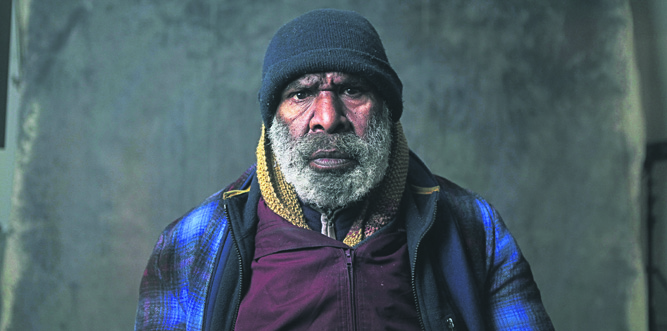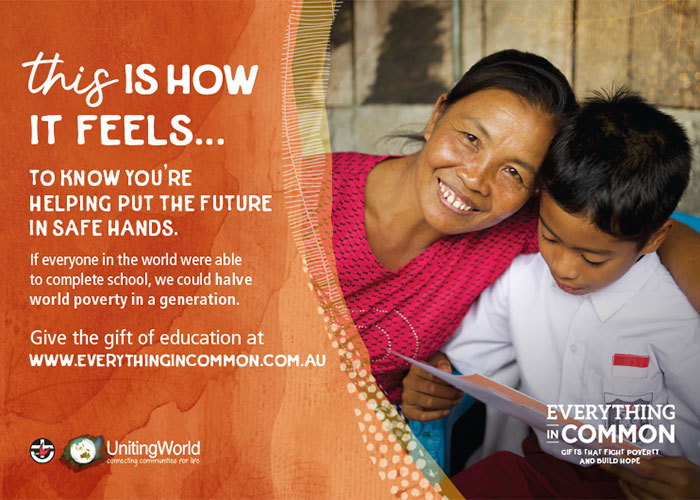He first started to approach people on the street on his lunch break in an attempt to locate the jelly factory where his grandmother used to work. “I never found it, but I got talking to a lot of people,” Lawrence said. What initially started as desire to learn more about his family history evolved into a much greater project, in the shape of a series of portraits and the photography exhibition, Redfern, I Love You, held at Damien Minton Gallery in July. The series features 12 people he met in Redfern, a few of them already well-known figures in the area, like the flamboyant shop owner of the Redfern Fruit Market on Regent Street.
All his subjects were photographed in his film company’s shopfront studio on Redfern Street, through a two-way mirror, so that the subject doesn’t look at the camera but at themselves, while Ben takes the picture hiding in a box. This device was inspired by documentary maker Errol Morris who invented the “Interrotron”. The focus point of the subject changes and he/she tends to look further than the camera, which gives them a subtly more intense and introspective look.
One of his photography subjects, Allan, was part of the Stolen Generation and was placed as a young boy in the Kinchela Boys Home, which housed between 400 and 600 Aboriginal boys between 1924 and 1970. This institution was known as being very harsh and a lot of violent acts and abuse, often sexual, were committed there.
Allan’s story touched Ben Lawrence profoundly and that is how he got in contact with the Kinchela Boys Home Aboriginal Corporation, which has been operating since 2001 as a support group for the survivors of the home on their journey of healing. Lawrence then decided that all the sales from the photographs would go to the corporation.
Pastor Ray Minniecon, the corporation’s founder and CEO, was delighted with the initiative, which highlights the situation of the Kinchela Boys Home survivors and the trauma they still have to deal with even today. “It was a very brutal place, and instead of being an educational institution, it was a torture chamber for many of them. I don’t think you can ever wipe out that memory … and particularly the question ‘Why was I taken from my family?’ still remains an unanswered question in their minds. Those questions are real for children, and they stick with the survivors of all those particular homes for the rest of their lives.”
Of the survivors of the home who are still alive today, the KBHAC currently supports about 70-80 men. “The big challenge for us is to make sure we can lobby the government, lobby organisations, get the funds we need to actually make a better life for them at the end of their lives rather than the life that they had in the homes as children.”
The KBHAC’s main goal is to help provide social and emotional well-being. “The focus is on how you reconstruct an identity that has been forcibly removed, how you reconnect a human being back to their own families, their communities, their cultures, all those kind of challenges.”
Ray Minniecon explains that Kinchela Boys Home was only one of many homes where children from the Stolen Generation were placed, as the forced removals policy was enforced statewide and interstate. “We have a huge task in trying to meet the needs of the survivors of the Stolen Generation … We’re only dealing with one particular home and we’re only dealing with the men. The women are another part of the story that we have to try to come to grips with and try to restore their dignity as well,” Minniecon said.
He hopes the story of those children keeps being told. “I appreciate Ben taking an incredible risk to actually have this exhibition here in Redfern in honour of the survivors of the Kinchela Boys Home. I’m honoured by coming here tonight to be a part of this particular exhibition, so that this story doesn’t die and that it keeps on growing. Hopefully one day we’ll see more of the different homes, and the children that had been taken to different homes have their stories recorded, be told in similar ways to the Kinchela Boys.”





